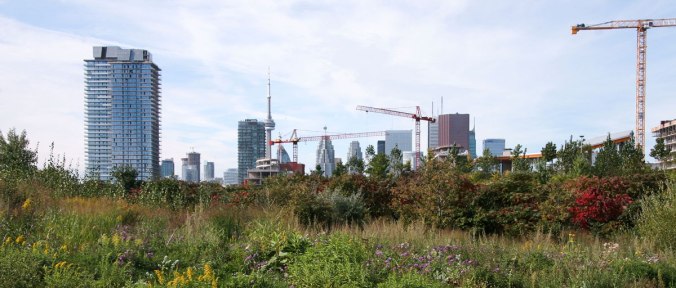One sure sign of fall has already appeared: woolly worm caterpillars. Leaves were already beginning to turn on the Canadian border last week, though still lush green in Arkansas. Temperatures have dropped. Rains have returned after the June-July dry spell. Caterpillars and young people are deciding where to spend the winter.

Late summer is a good time to observe caterpillars other examples of the r phase of the adaptive cycle.
The woolly worm is the most well-known fall caterpillar in the South; they are called woolly bears in the Midwest. They are bristly, a couple of inches long with a brown band in the center and black tips. We pick up each woolly worm to see how long the brown band is. If they are all black or the brown band is small, the winter is supposed to be long and hard. So far, it seems the brown band is longer, so maybe the winter won’t be so bad. One I saw this morning had barely any black on it at all.
Caterpillars hatch from eggs laid by butterflies in warm weather. The caterpillars eat as much as they can and then search for overwintering sites under bark or inside cavities of rocks or logs. That’s why you see so many woolly worms crossing roads or paths or on your screen door in the late summer and fall.
Also everywhere in late summer around here is the red-spotted purple butterfly or Limenitis arthemis. The top is mostly blackish purple with an iridescent blue stripe on the hind wings. The underside has orange-red spots. The butterflies feed on moisture from damp ground. You’ll often see them when you go swimming in the creek in the late summer.
The females lay eggs on the tips of leaves of deciduous trees–especially birch and black cherry. They hatch out in less than a week and feed on the leaves, growing into a one and a half inch long caterpillar which looks like bird droppings. Great way to look distasteful to birds.
There are lots more fascinating late summer caterpillars here. They are all examples of the fast growing r phase of any living system. They eat a lot and build themselves up so they can turn into the mature butterfly stage.
The human equivalent is the teenager or young adult–fast-growing, fascinating and preparing for the mature stage. We see a lot of young people come and go at Meadowcreek. They have lots of energy, build interesting structures and usually move on.
The long-term Meadowcreek residents welcome the young folks, get attached to them and hate to see them go. But we know they will be replaced with new youth in good time or they will come back when they are ready to settle down.
4box-adaptive-cycle1Resilience research is built on the four phases of the adaptive cycle: alpha or α, r, K and omega or Ω. In the α phase, the system is organizing itself. In newly cleared or burnt-over ground, this is when new species cover the ground, protecting it for the next phase. In cultivated fields, this phase is when fields are planted. The seeds establish themselves and grow rapidly. In human life, this is childhood. Patterns are laid which will determine the fate of the adult.
Grasses and invasive species dominate, saplings get established. In natural ecosystems, the established young trees then enter the fast growing r phase. Resources are accumulated as wood and roots until the tree is well rooted, strong and tall. In cultivated fields this is seen as the plants reach their full height. In humans, the young quit growing, finish their schooling and settle down.
Then the K phase begins. This phase of maturation is the mature forest, the crop field setting seed, the adult human establishing a home. Offspring are created in this phase and sent off to establish new homes or wait till a place opens up for them.
The Ω phase is when resources are released to provide a foundation for a new system. In forests, the Ω phase is a forest fire or a clear cut. In wheat, corn or rice fields, it is the harvest. In businesses, it is the retirement of the boss. In farms, it is passing on the land to the next generation.
At Meadowcreek, we watch the adaptive cycle in the forests, the fields, the caterpillars and the young residents. Our task is to help the gardens and beds move through the cycle to provide food for us. To harvest the mature trees for firewood and biochar. And to help the young people lay a solid foundation of knowledge and experience so they can contribute to a resilient world wherever they go.
Right now, though, we’re paying attention to woolly bears. If you see any, measure the bands and drop us a iine or two: meadow@deltanetwork.org. They sure are saying its going to be a mild winter here.


